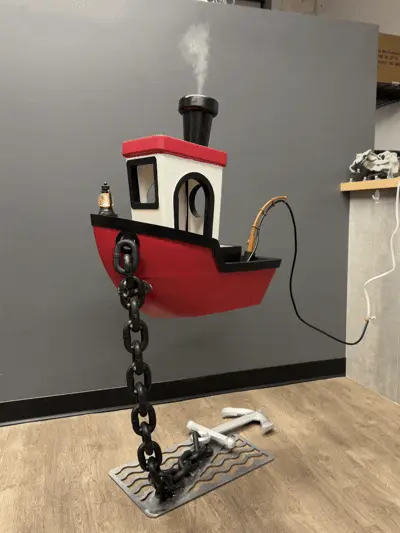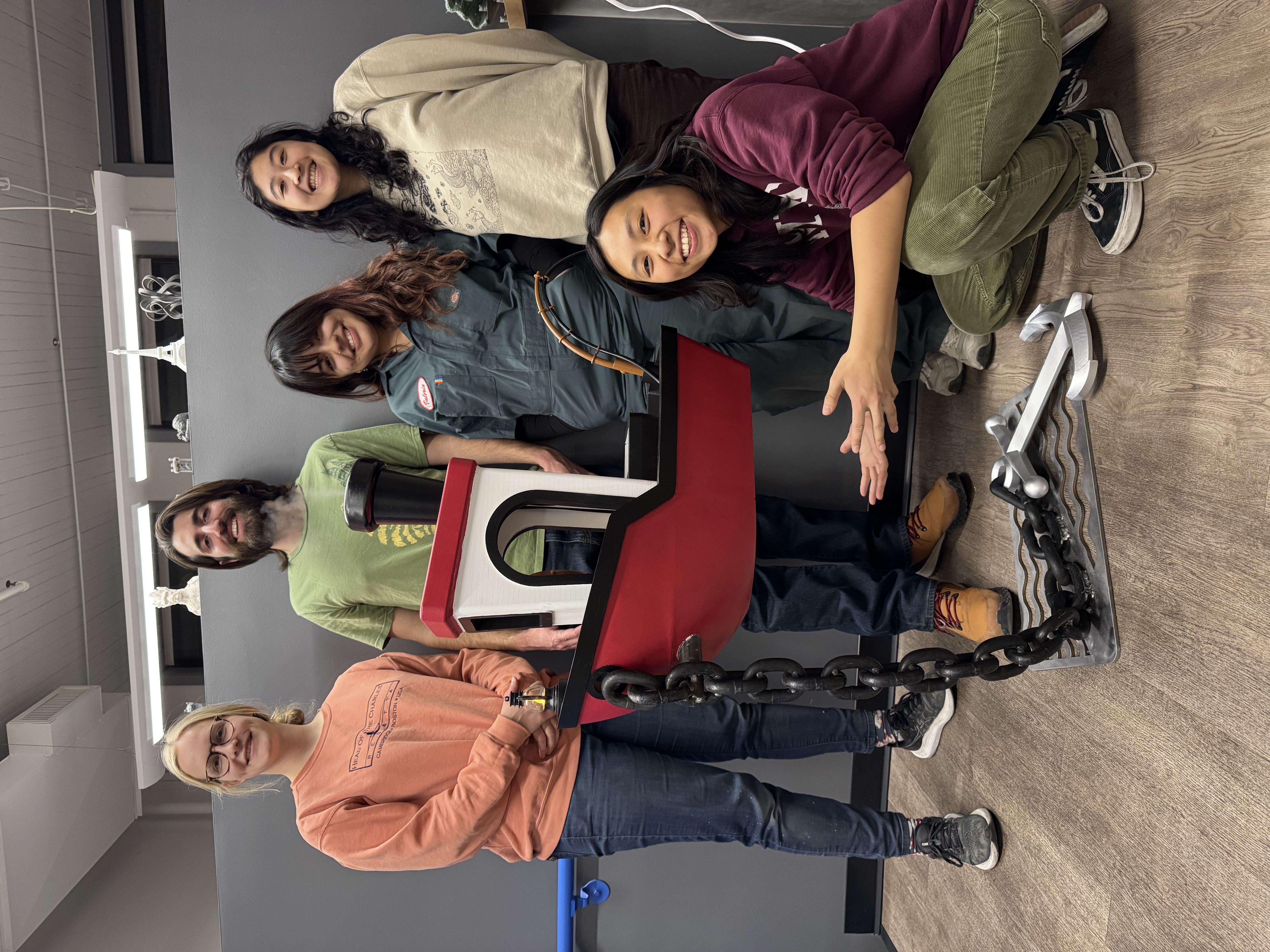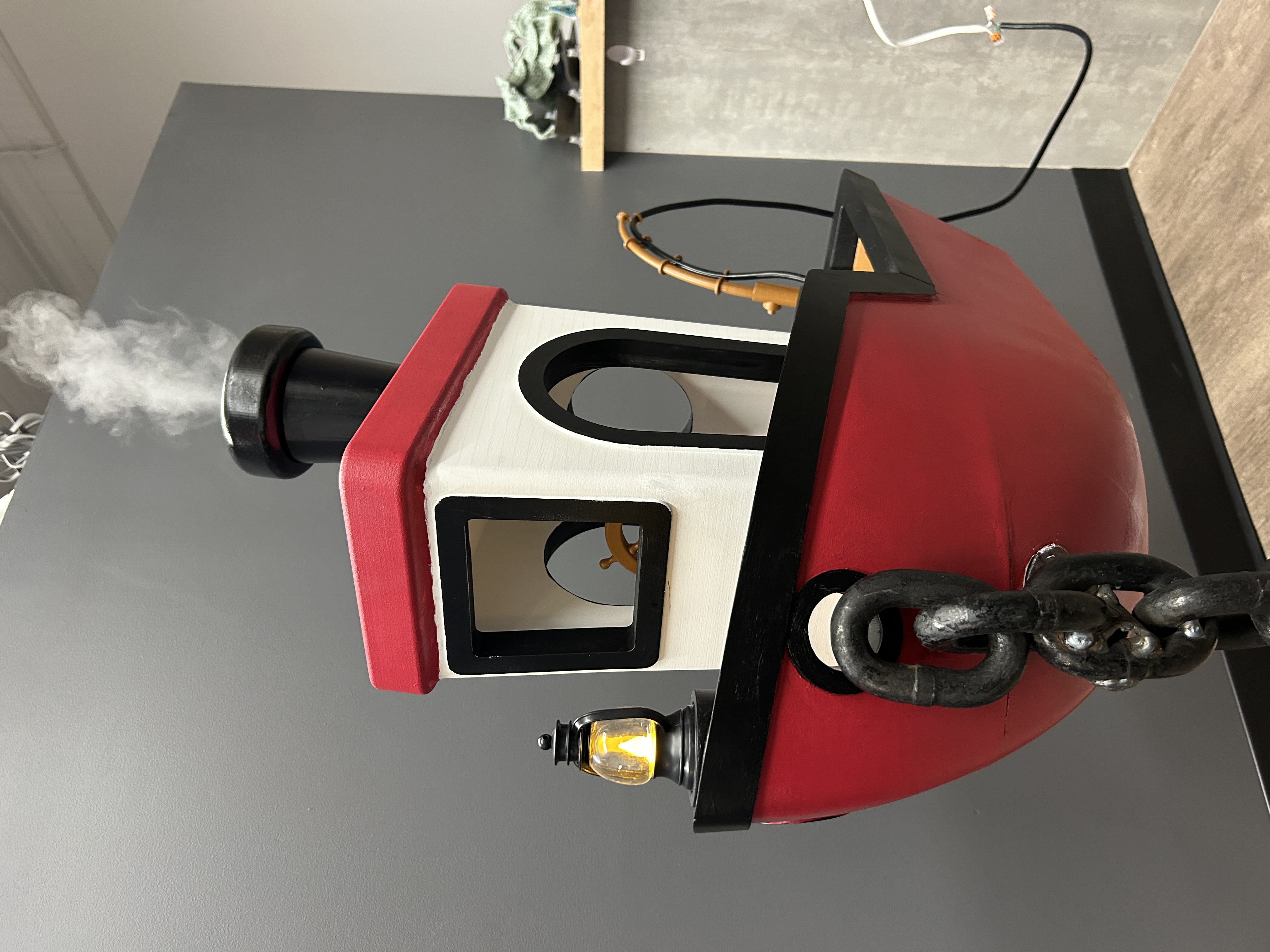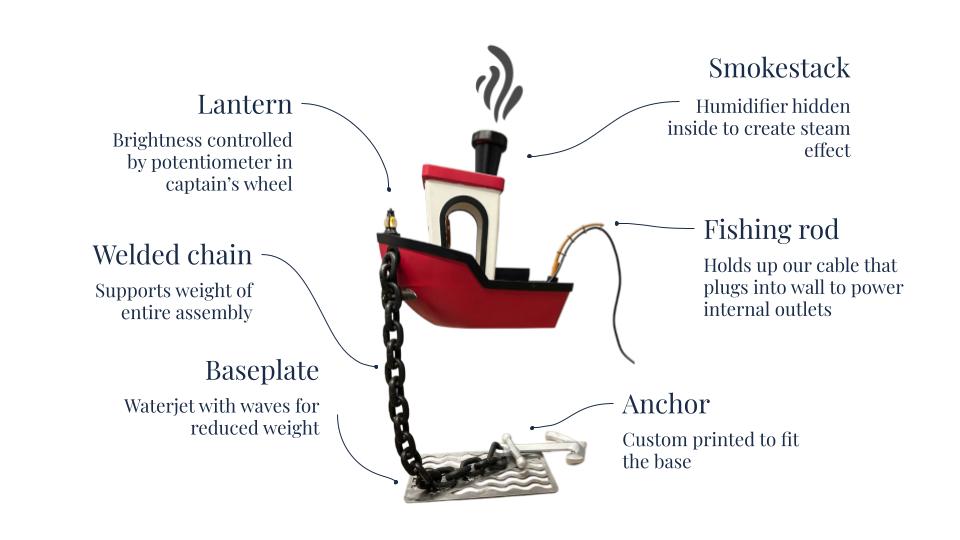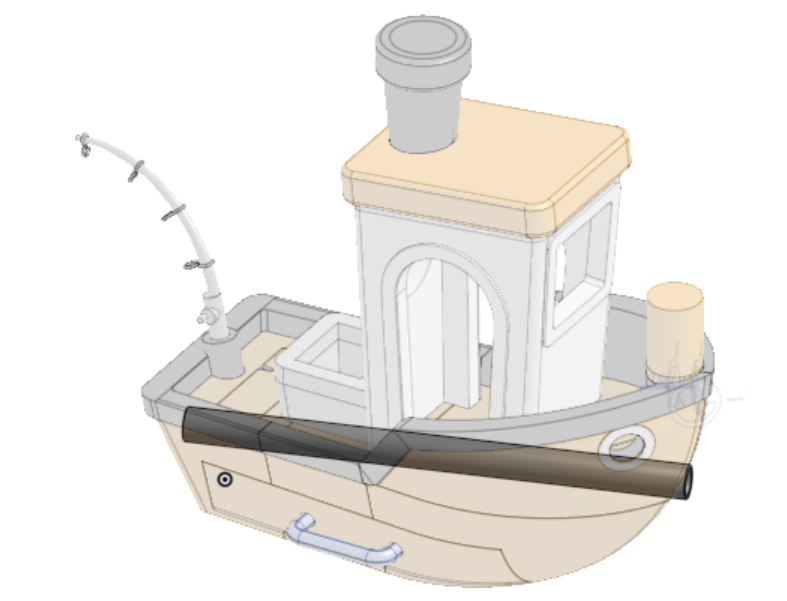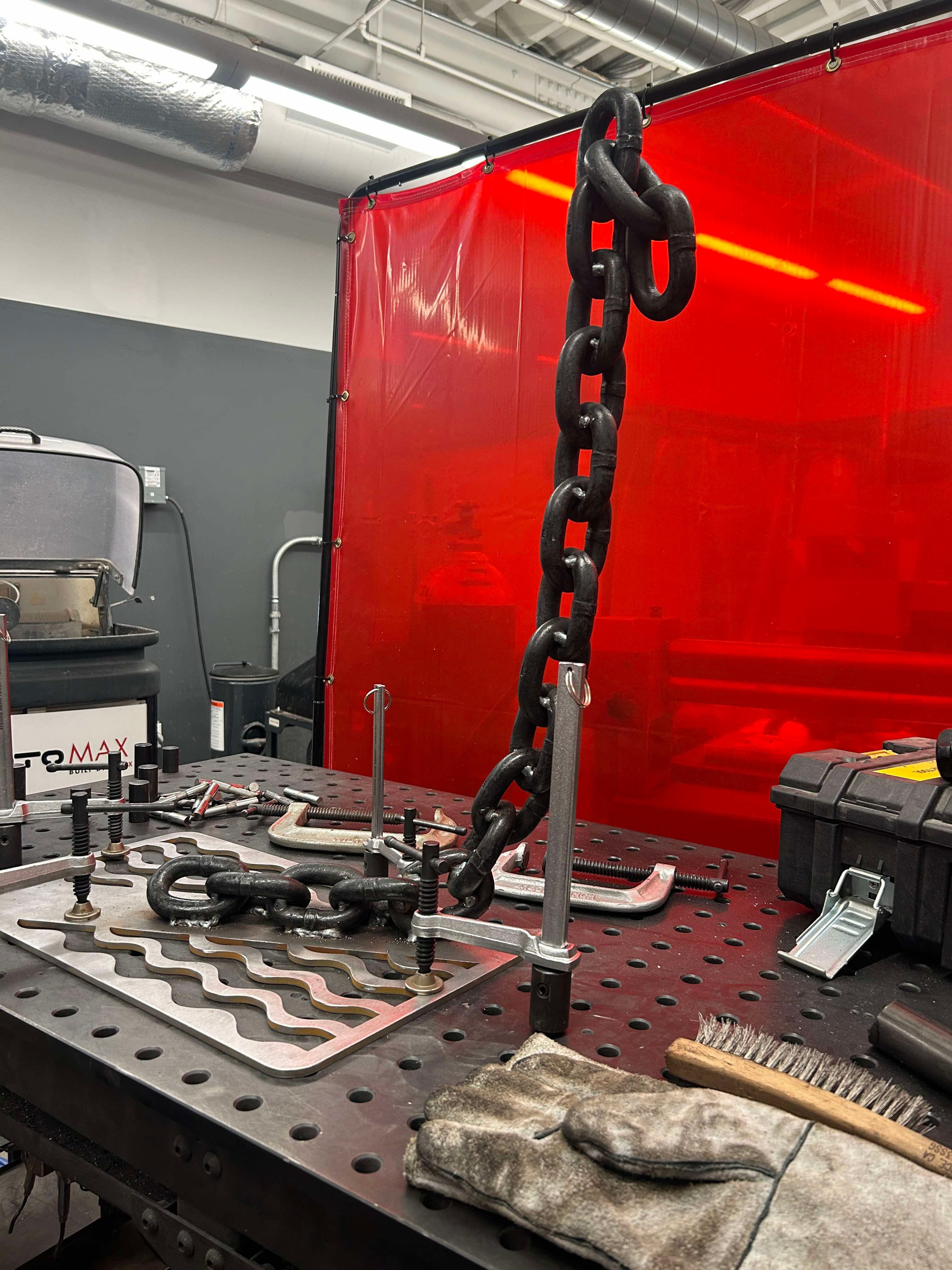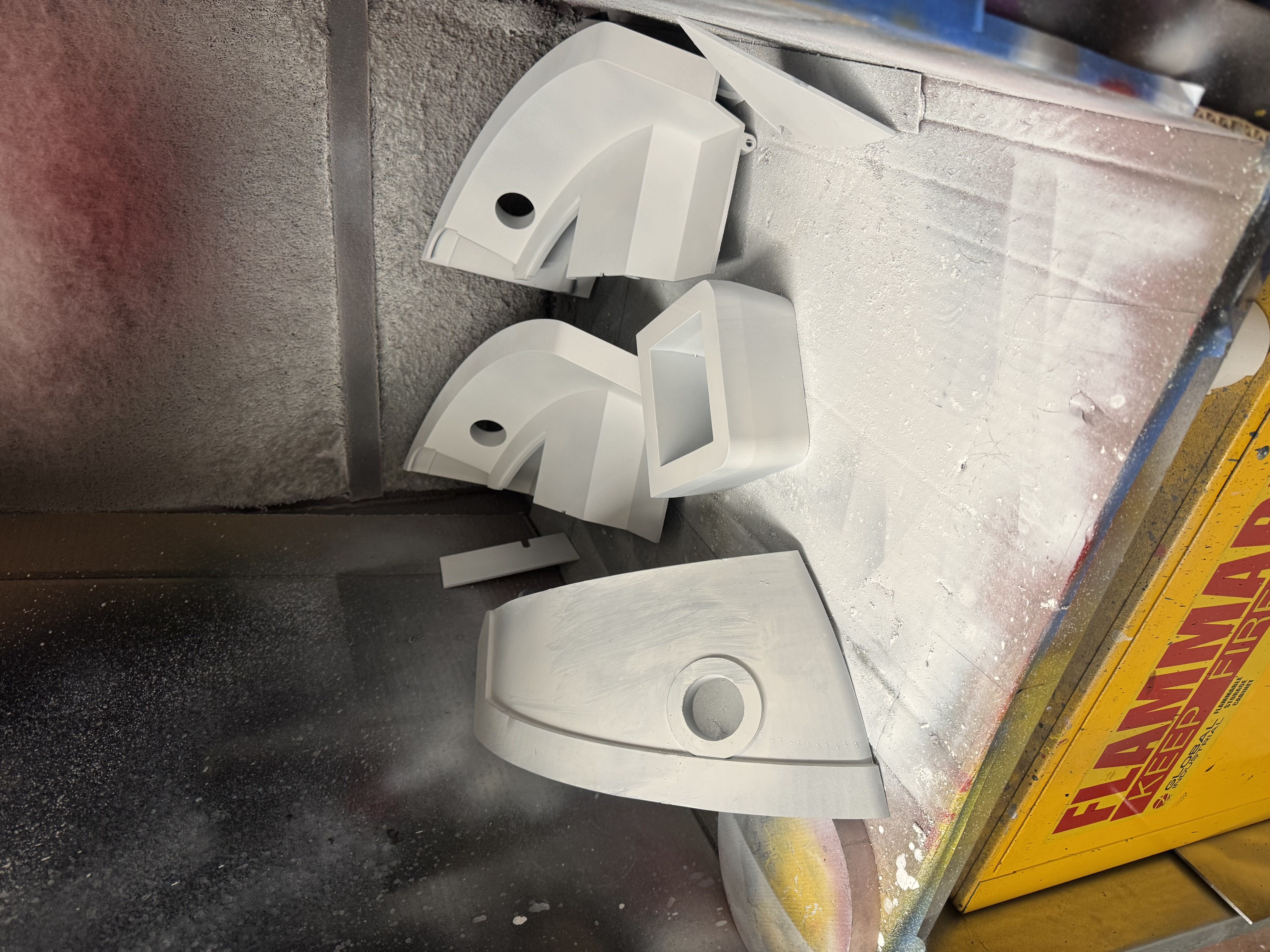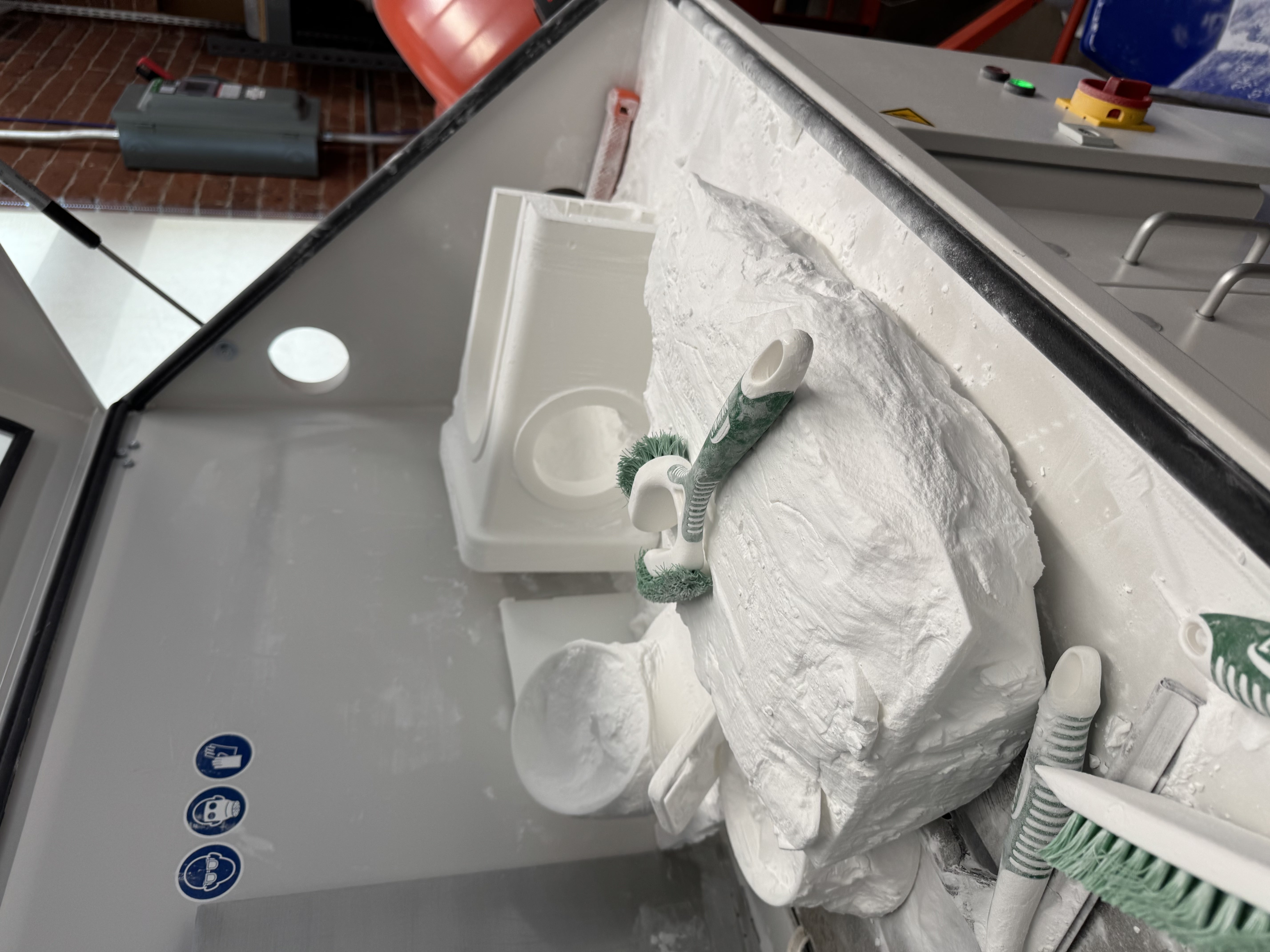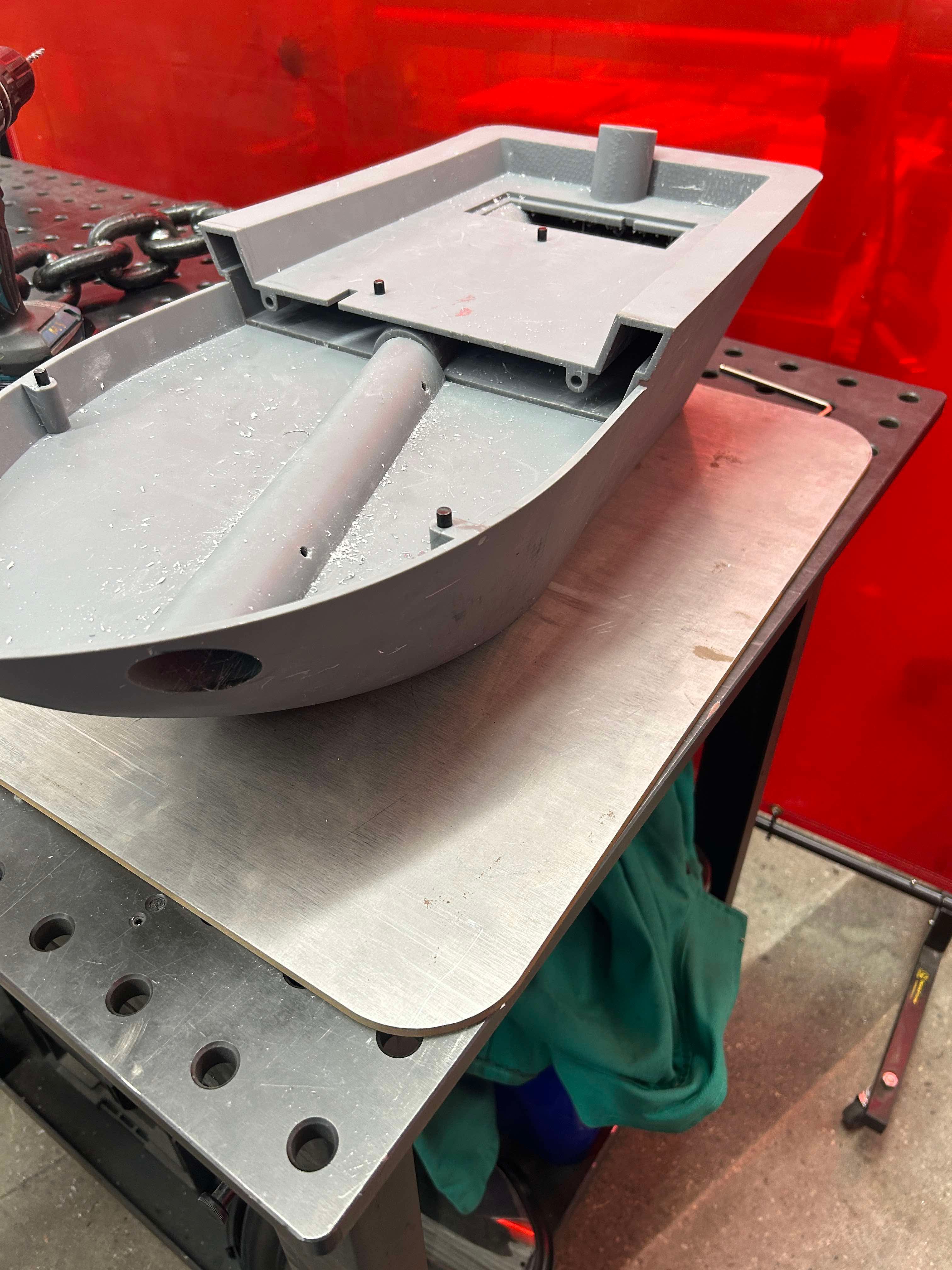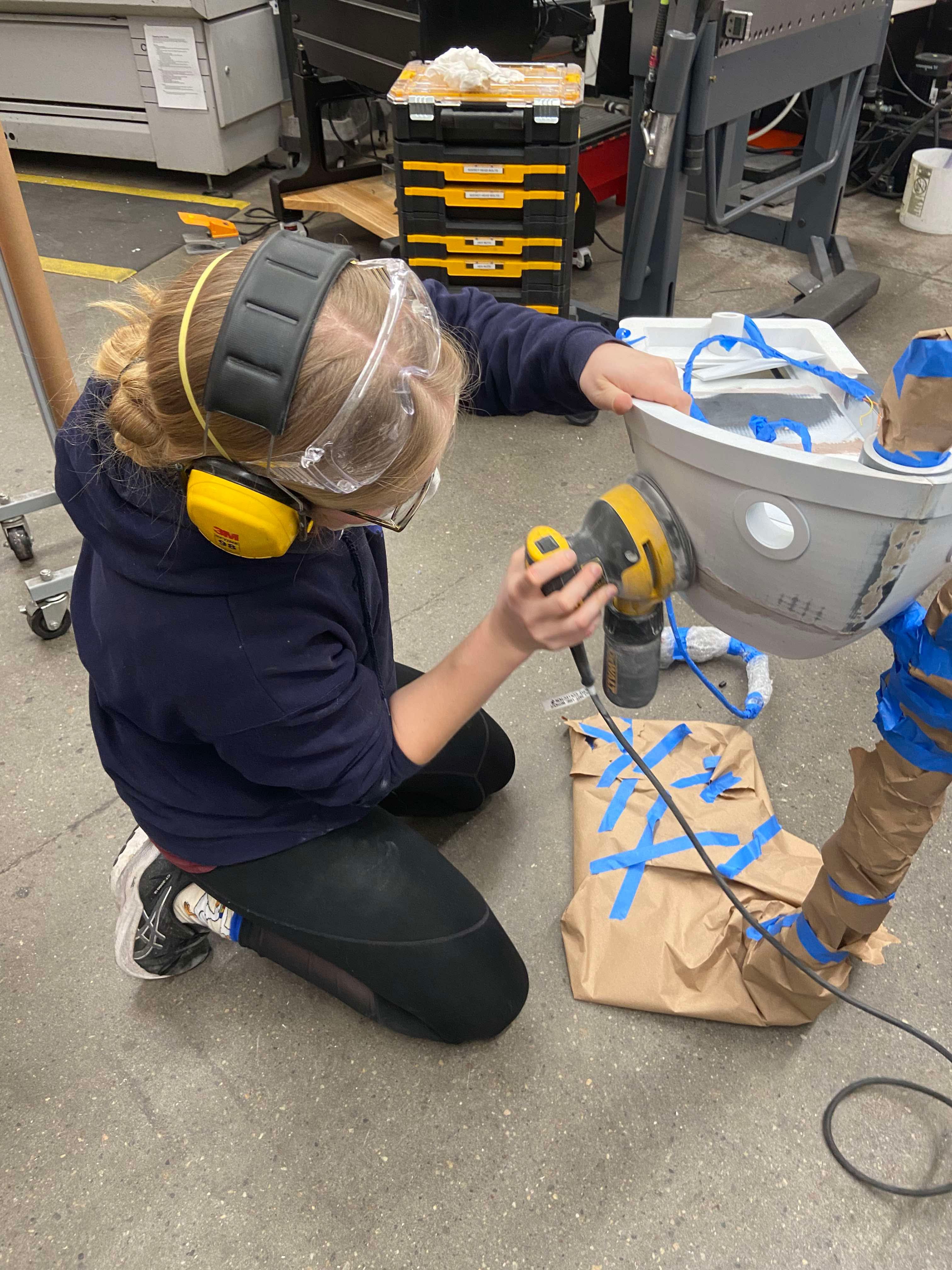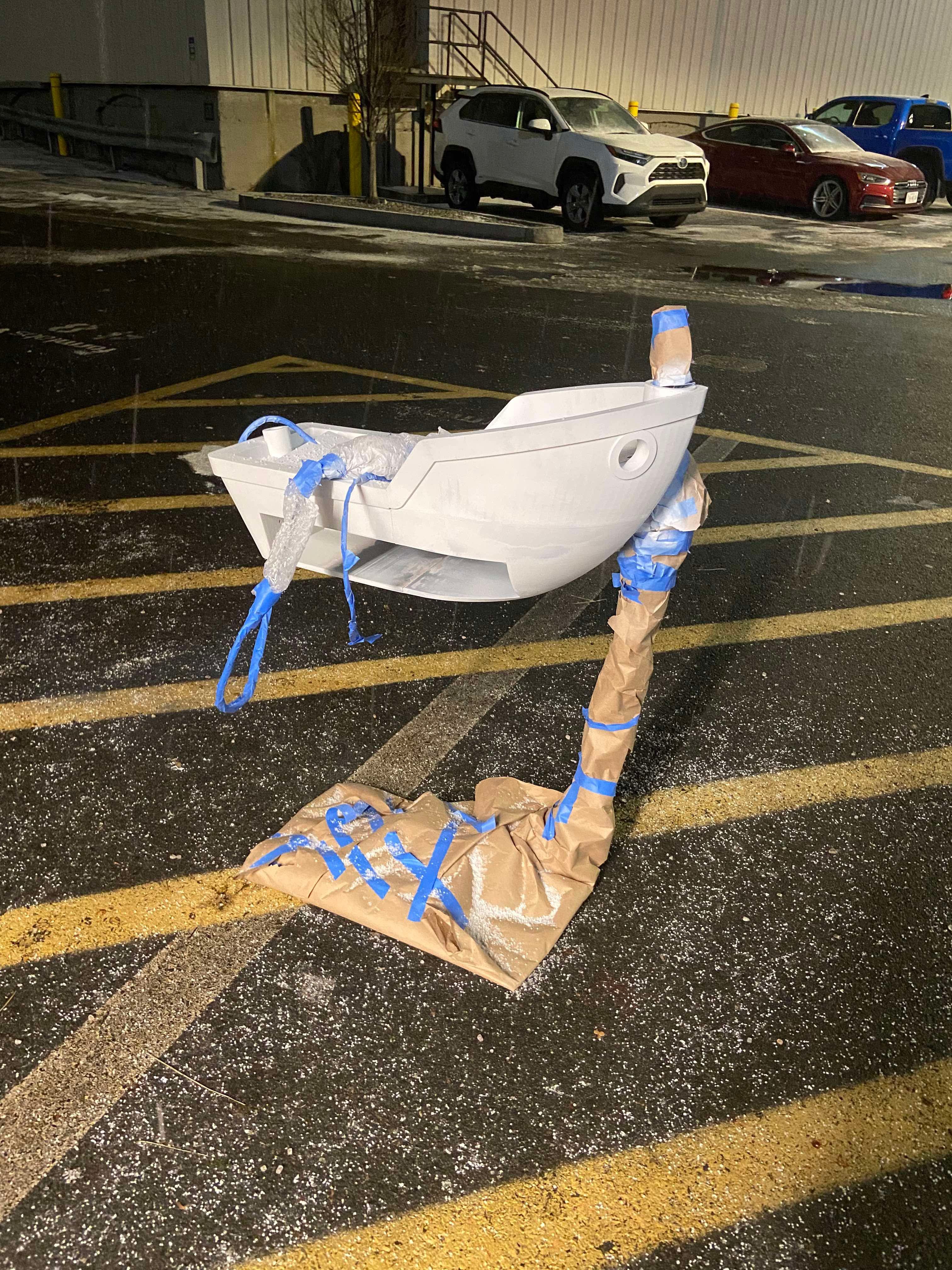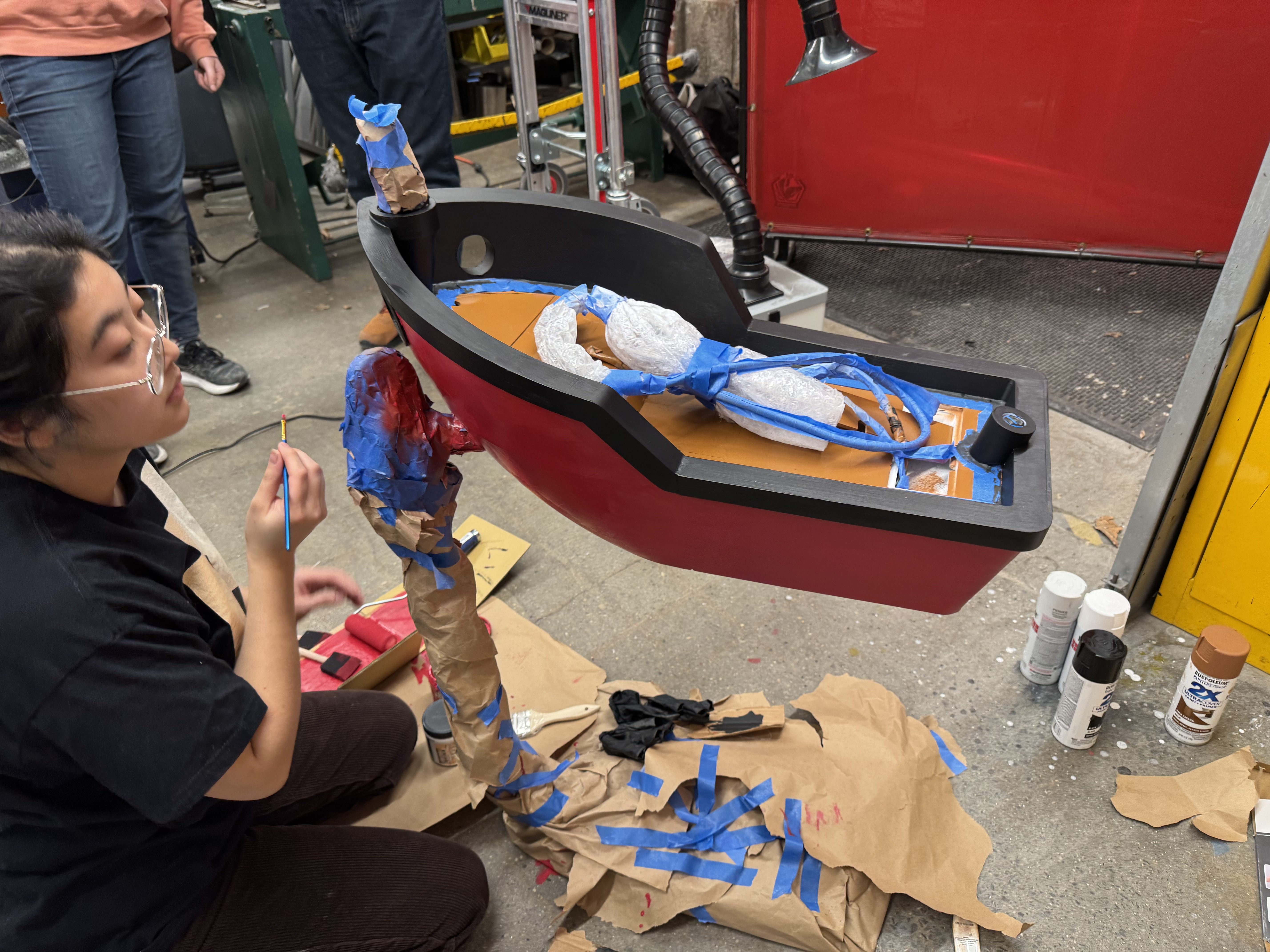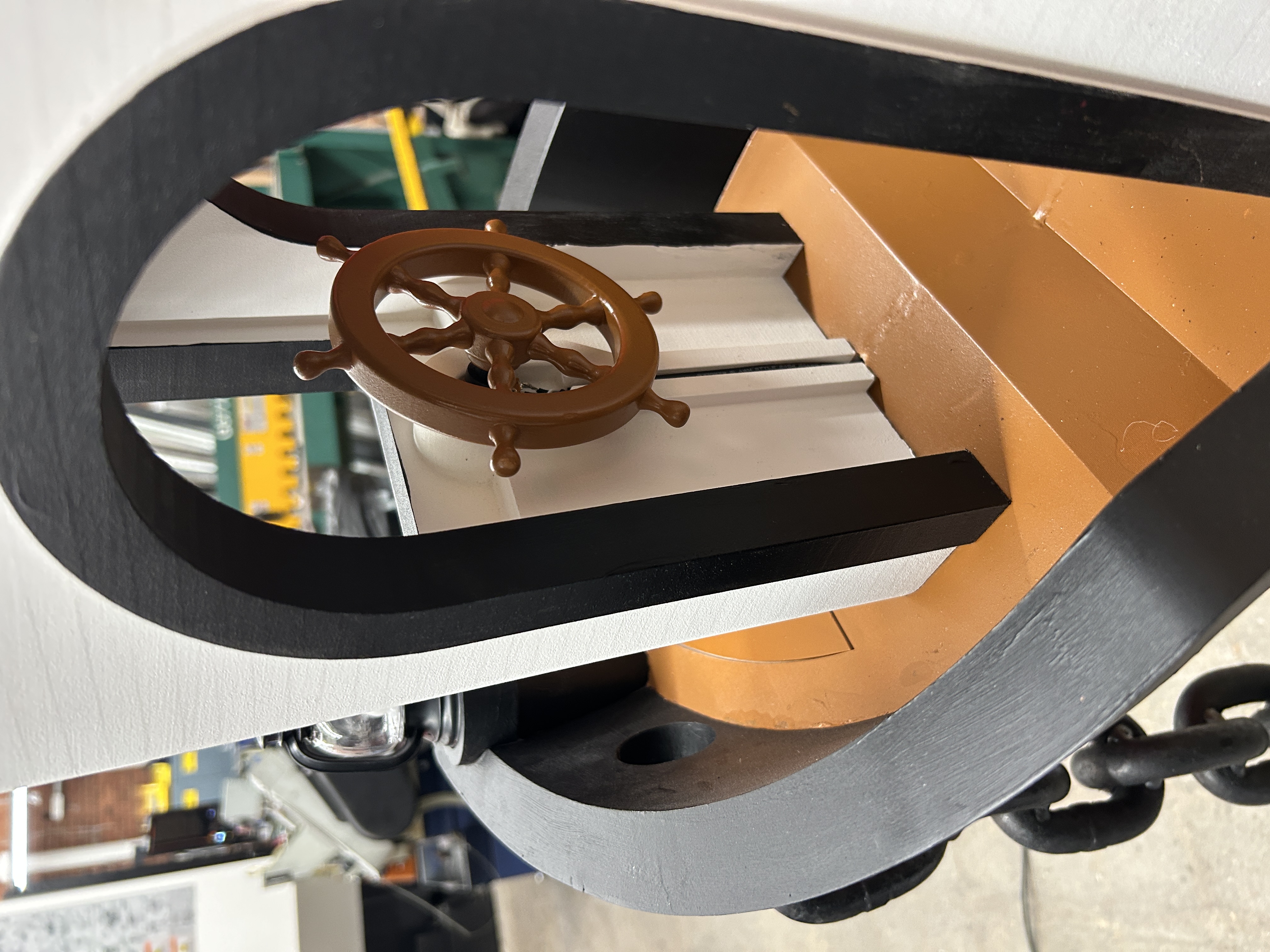Big Boy Benchy
- CategoryFor fun
- Project dateJanuary 2025
- Skills usedSLS/SLA 3D-printing, soldering, CAD in Onshape, welding, waterjet
About this
This was a weekend project for the MIT-Formlabs Hackathon! Our team of 6 did the majority of the CAD in Onshape in advance and manufactured/assembled during the actual hackathon.
We wanted the boat to appear "floating," where the only support to the floor was a single chain. This had obvious challenges, since we needed to be sure that it could withstand such a cantilevered load. We decided to add a central steel rod diagonally through the benchy to better support it and prevent stress concentrations.
First, we began our design process in CAD, splitting the benchy into sections that could be printed. Every non-metal part of the boat was 3D printed; the hull, fishing rod, anchor, and smokestack were all SLA printed on the Form 4 or 4L, while the wheelhouse had to be SLS printed to be printed in one piece. In order to minimize weight, we hollowed the hulls and reinforced the inside with ribs. We also added holes for dowels to act as aligning pins, which would help during assembly. We had challenges using SLA parts; resins with a higher Young's modulus showed extreme warping despite our efforts to minimize it. As a result, we had to be particularly careful in our desin as the low-warp resins we ended up using are particularly brittle.
In order to support the weight of the benchy, we welded chain into a stiff bar. We then welded the bottom of the chain to a waterjet steel plate for the base and the top of the chain to the bar.
After printing/post-processing our prints (washing/curing for SLA and depowdering/media blasting for SLS), we drilled clearance holes through the prints which interfaced with the steel rod. We then drilled and tapped matching holes onto the steel rod, then fastened and epoxied the prints to the rod so they could not spin about the rod.
We joined the prints together with epoxy, using Bondo to fill gaps. After sanding all the surfaces flush, we applied primer to each print. Using a combination of spray paint and acyrlics, we decorated the final benchy.
We wanted to control the brightness of the lantern using the captain's wheel. We modified an off-the-shelf lantern decoration, removing the battery and adding a potentiometer inline to the power supply. To produce "smoke," we purchased a small humidifer and designed the smokestack so the top cap could be easily removed and the diffuser refilled. We routed all the cables down into the hulls and connected it to a central power strip.
